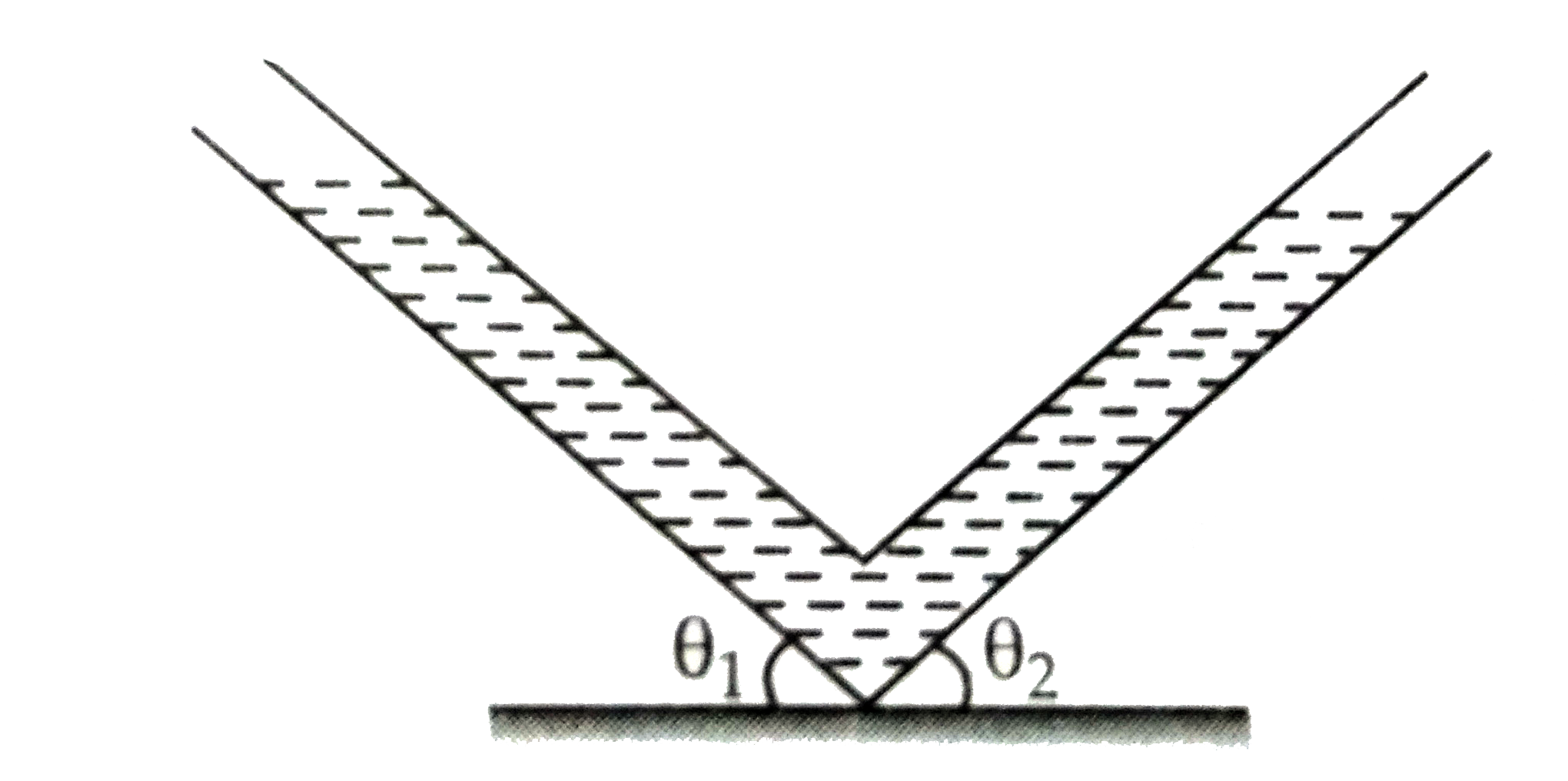Pressure due to a liquid is ________ of the area of cross-section of containing vessel.
To solve the question, "Pressure due to a liquid is '________' of the area of cross-section of containing vessel," we need to analyze the relationship between the pressure exerted by a liquid and the area of the cross-section of the containing vessel.
1. Understanding Pressure:
Pressure is defined as the force exerted per unit area. The formula for pressure (P) is given by:
P=FA
where F is the force and A is the area.
2. Weight of the Liquid:
The force exerted by the liquid is its weight. The weight (W) of the liquid can be expressed as:
W=m⋅g
where m is the mass of the liquid and g is the acceleration due to gravity.
3. Mass of the Liquid:
The mass of the liquid can be calculated using its density (ρ) and volume (V). For a cylindrical vessel, the volume of the liquid is:
V=A⋅H
where A is the cross-sectional area and H is the height of the liquid column. Thus, the mass can be expressed as:
m=ρ⋅V=ρ⋅(A⋅H)
4. Substituting Mass in Weight:
Substituting the expression for mass into the weight formula gives:
W=ρ⋅(A⋅H)⋅g
5. Calculating Pressure:
Now, substituting the weight into the pressure formula:
P=WA=ρ⋅(A⋅H)⋅gA
The area A cancels out:
P=ρ⋅H⋅g
6. Conclusion:
The final expression shows that the pressure due to a liquid column depends only on the density of the liquid (ρ), the height of the liquid column (H), and the acceleration due to gravity (g). It does not depend on the area of cross-section A. Therefore, we can conclude that:
Pressure due to a liquid is independent of the area of cross-section of the containing vessel.
Final Answer:
Pressure due to a liquid is independent of the area of cross-section of containing vessel.
Pressure is defined as the force exerted per unit area. The formula for pressure (P) is given by:
P=FA
where F is the force and A is the area.
The force exerted by the liquid is its weight. The weight (W) of the liquid can be expressed as:
W=m⋅g
where m is the mass of the liquid and g is the acceleration due to gravity.
The mass of the liquid can be calculated using its density (ρ) and volume (V). For a cylindrical vessel, the volume of the liquid is:
V=A⋅H
where A is the cross-sectional area and H is the height of the liquid column. Thus, the mass can be expressed as:
m=ρ⋅V=ρ⋅(A⋅H)
Substituting the expression for mass into the weight formula gives:
W=ρ⋅(A⋅H)⋅g
Now, substituting the weight into the pressure formula:
P=WA=ρ⋅(A⋅H)⋅gA
The area A cancels out:
P=ρ⋅H⋅g
The final expression shows that the pressure due to a liquid column depends only on the density of the liquid (ρ), the height of the liquid column (H), and the acceleration due to gravity (g). It does not depend on the area of cross-section A. Therefore, we can conclude that:
Pressure due to a liquid is independent of the area of cross-section of the containing vessel.
Pressure due to a liquid is independent of the area of cross-section of containing vessel.
Topper's Solved these Questions
- FORCE AND PRESSURE BOOK - ICSECHAPTER - FORCE AND PRESSURE EXERCISE - EXERCISE 3.2 (STATEMENTS)
4 Videos
- FORCE AND PRESSURE BOOK - ICSECHAPTER - FORCE AND PRESSURE EXERCISE - EXERCISE 3.2 (WRITE TRUE OR FALSE)
4 Videos
- FORCE AND PRESSURE BOOK - ICSECHAPTER - FORCE AND PRESSURE EXERCISE - EXERCISE 3.1 (STUDY QUESTIONS)
18 Videos
- ENERGYBOOK - ICSECHAPTER - ENERGYEXERCISE - THEME ASSIGNMENT
4 Videos
- HEAT TRANSFER BOOK - ICSECHAPTER - HEAT TRANSFER EXERCISE - Picture Study
2 Videos
Similar Questions
(a) What is meant by the principle of continuity ? Show that velocity of a liquid is inversely proportional to the area of cross-section of a pipe or tube.
View SolutionConsidering a wire of non-uniform cross-section as shown.If the area of cross-section at A is double of the area of cross-section at point B.Ratio of heat energy dissipated in a unit volume per unit time at points A and B is
_PHY_E05_279_Q01.png)
View SolutionThe volume V of a liquid crossing through a tube is related to the area of cross-section A, velocity v and time t as VαAavbtc which of the following is correct ( given a≠1 )
View SolutionThe mass of the liquid flowing per second per unit area of cross-section of the tube is proportional to (pressure difference across the ends)^(n) and (average velocity of the liquid)^(m) . Which of the following relations between m and n is correct?
View SolutionIn this figure, an ideal liquid flows through the tube having uniform area of cross-section and is held in vertical plane. Find the ratio of speed of liquid at A and B and also find the pressure difference between- these points.

View SolutionA wire of cross-sectional area A breaks due to its own weight when length of the wire is l. If area of cross-section of the wire is made 3A then maximum length of the wire can be hung without breaking is
View SolutionWhen a force of one ________ acts on an area of cross-section 1m2, the pressure exerted is said to be one ___________
View SolutionA non viscous liquid of density ρ is filled in a tube with A as the area of cross section, as shown in the figure. If the liquid is slightly depressed in one of the arms, the liquid column oscillates with a frequency

View SolutionWhen a pressure measuring device is immersed in a liquid, a restoring force of 2 N is exerted by the spring. If the area of cross-section of the pistion is 10 cm2, what pressure does the fluid exert on the piston?
View SolutionTwo gases H2 and O2 fuse from two different containers having same pressure and temperature. If the ratio of area of cross section of hole is 1:2 then the ratio of rate of effusion will be
View Solution
